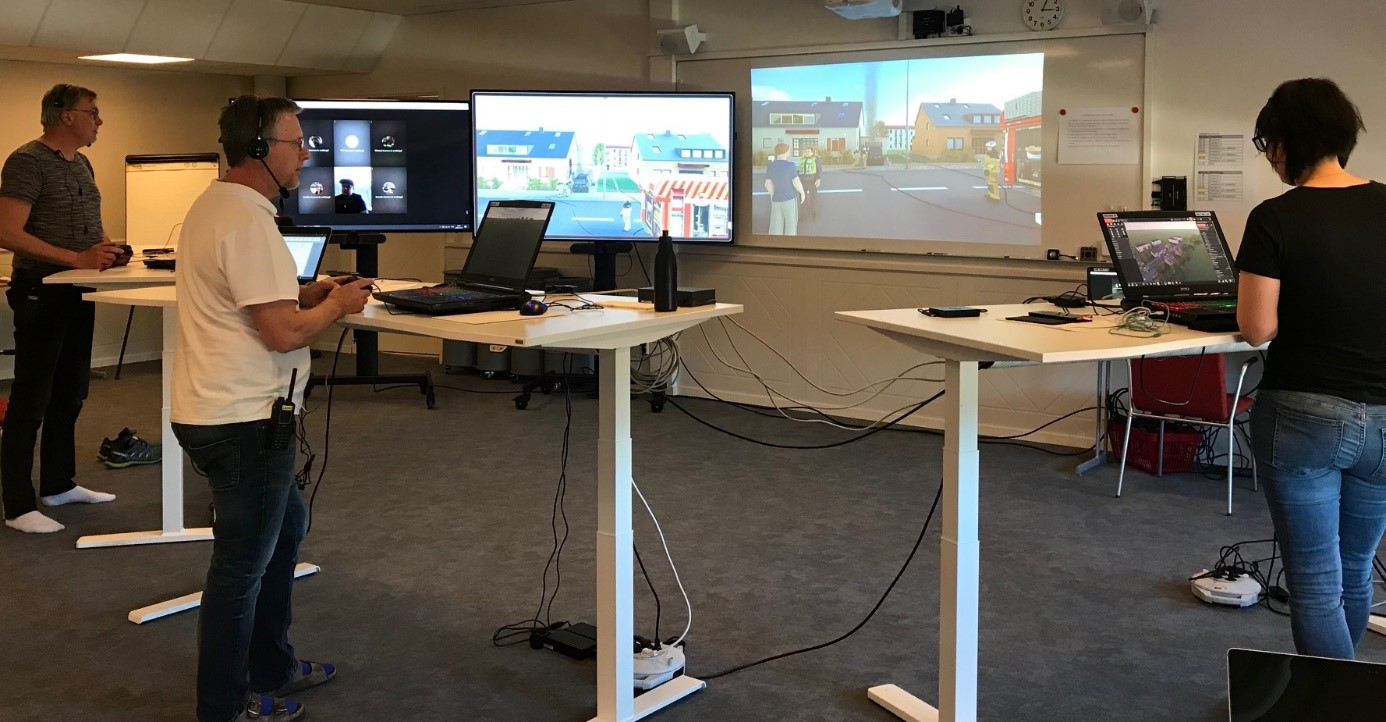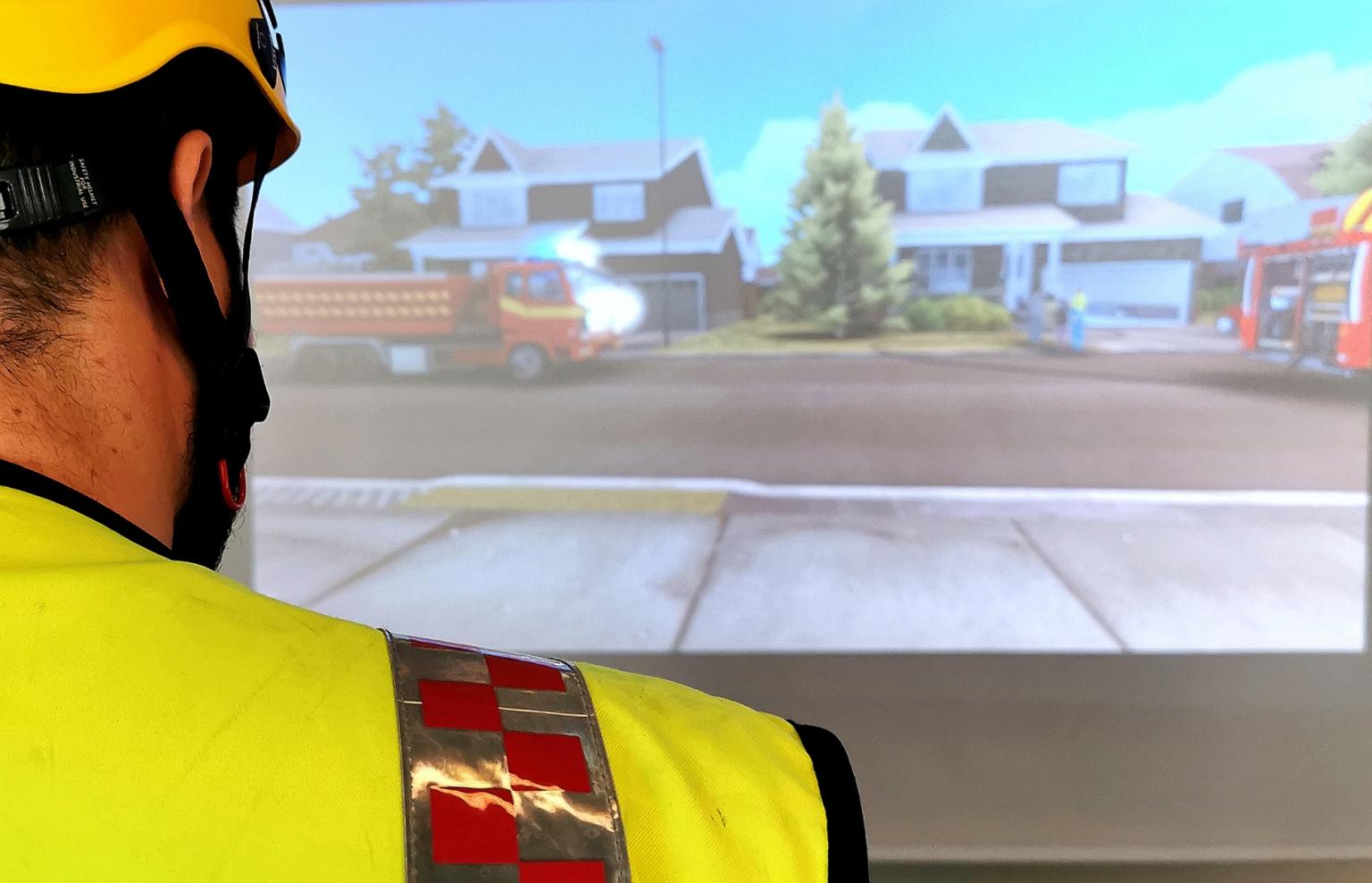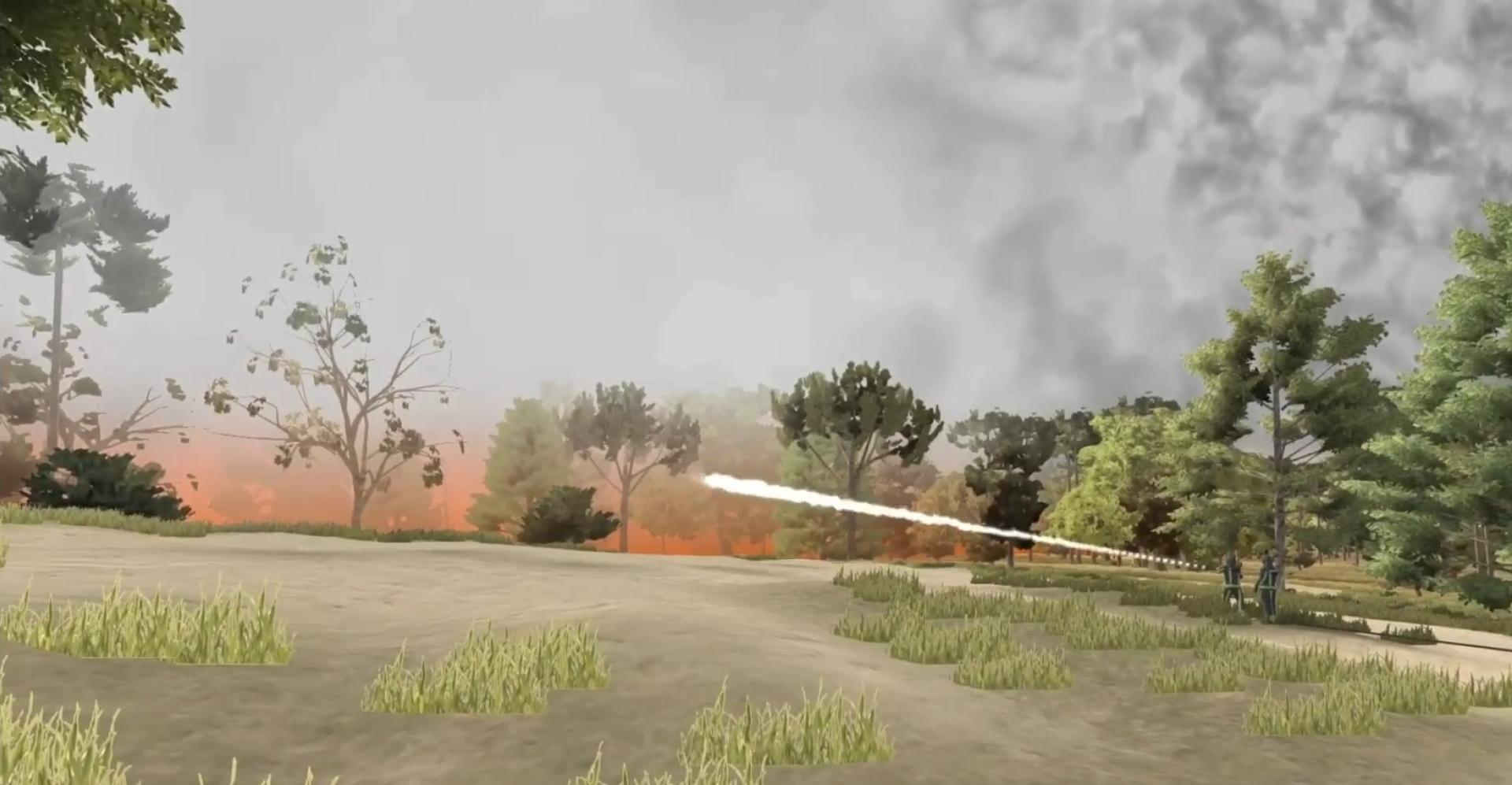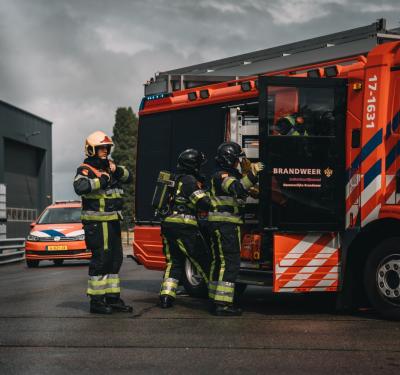1870 km apart: MSB conducts exams remotely with XVR
This spring, the final exams for the Incident Command level one course at the Swedish Civil Contingencies Agency (Myndigheten för samhällsskydd och beredskap, MSB) set a world-wide example. Due to the COVID-19 pandemic, it was decided that all final exams for the 22 graduating incident commander students would be completed remotely using XVR On Scene. The trial was such a success that both of MSB’s colleges will be implementing remote virtual training in next semester’s level one curriculum.
Cecilia Hammar Wijkmark, Virtual Simulation Specialist at MSB, championed the solution of carrying out the final assessments remotely using computer-simulated scenarios. She has long been working to implement more virtual simulation teaching methods into the MSB curriculums, as the advantages to this type of training are many – for both students and instructors.

(© Cecilia Hammar Wijkmark)
With virtual reality training software like XVR On Scene, instructors can create a large number of realistic scenarios to train students in a wide variety of incidents, some of which they would not be able to create at a live training site. Virtual scenarios are easily customised by the instructor to include factors and events that impact the student’s assessment and decision-making, and they also allow participants to practice many of the different roles an incident commander must be able to fulfil. Similarly, instructors can assess their students across a wider set of roles and scenarios, while also giving them all the exact same starting points and preconditions. In addition to all this, Cecilia Hammar Wijkmark also considers virtual reality training a very resource-effective way of training – students can receive more training in more aspects of their future role using fewer means.
In Sweden, incident commanders are trained at the MSB colleges, and live simulation exercises are traditionally used for training and assessment, often in combination with firefighter students. New incident command students are often nervous about making mistakes or wrong choices during live exercises, since the stakes are (or can feel) higher and involve many people (unfamiliar firefighter students, assessors and safety personnel, etc.), leading to high stress levels that could affect their learning negatively. Simulated scenarios remove this risk factor, allowing the student to feel more at ease while also being able to immediately see the consequences of their actions when their instructor triggers the built-in learning points. They can even practice making mistakes, just to see the outcome, as the simulated scenario can be repeated over and over again – something that is also not possible at a live training site. When asked if she therefore believes future incident commanders will be better equipped if computer-simulated trainings become a fixed part of the curriculum, Cecilia Hammar Wijkmark’s answer is an emphatic: “Yes, absolutely”.
While MSB has been using XVR’s platform for trainings and assessment for some time, and students are able to do some of their coursework from home, this way of conducting exams entirely remotely was a first for all participants. The first of MSB’s two colleges to test this new method was MSB Sandö. Cecilia Hammar Wijkmark and her team have been arguing for integrating remote virtual simulation training and education for many years, but it was the pandemic that forced this decision to the top of the management’s priority list. The suggestion to carry out the final exams remotely using XVR On Scene was initially met with some degree of scepticism among teachers at both colleges. However, teachers and students alike were pleasantly surprised with the results, praising the sense of realism, high immersion level and the ease of which they could carry out tasks and assessments. “I knew that we could use virtual simulation remotely as well, but that it was possible to do so with the same high quality, and maybe even better, really surprised me positively,” says teacher (and virtual reality training enthusiast) at MSB Sandö, Sune Fankvist.

(© Cecilia Hammar Wijkmark)
During the examinations, each participant and examiner were located in their own home offices, from Ronneby in the south to Gällivare in the north, locations which span a stunning 1870 km. The geographical dispersion of the students in a country as large as Sweden (almost twice the size of the UK and 11 times larger than the Netherlands) means that students must often travel a long way to attend classes at one of MSB’s locations in Sandö, which sits approx. at the middle of the Eastern coast, or Revinge in the far south. Using simulated training exercises remotely would remove this obstacle for a great many students, especially those living in the far-flung, thinly-populated corners of the country, while enabling them to keep their skills sharp and up-to-date. A part-time firefighter living in a rural area explained it like this: “We only get 12 incident calls a year. To have access to [the simulated MSB trainings] would give me the opportunity to train much more and be better prepared.”
When it comes to modernising existing educational formats by implementing more virtual simulation training and assessment (on-site and remotely), Cecilia Hammar Wijkmark believes that we are facing a shift in paradigms: “Modern simulation technologies can be used to train emergency responders on both operational and tactical levels more efficiently and of a higher quality than ever before”, she says. In Sweden, the demand for more remote education is growing due to long travel distances, and for many students the costs of travelling as well as being away from their fire service (and their families) are also high. However, it is not a question of substituting traditional on-site exercises with remote virtual reality training; implementing more remote trainings is not an either-or, but a both-and solution. “You can’t become an incident commander just by reading, watching videos or animations, or attending lectures on Zoom. You need training in the role in as-realistic-as-possible incidents. Remote virtual simulation training and assessment exercises like the ones we did are the absolute best solution today”.
Cecilia Hammar Wijkmark hopes that the use of virtual reality training at MSB, both on-site and remotely, will continue to increase in the future – in her opinion, it is the only way forward. “We don’t need to stop using traditional methods, they still have their place in education”, she states and continues, “But technology develops rapidly. We need to embrace the possibilities it offers and continue to innovate the educational methods to enhance our education and training at a pace that keeps up with the development of new risks in our ever-changing world.”
Overview



.png?resolution=400x375)